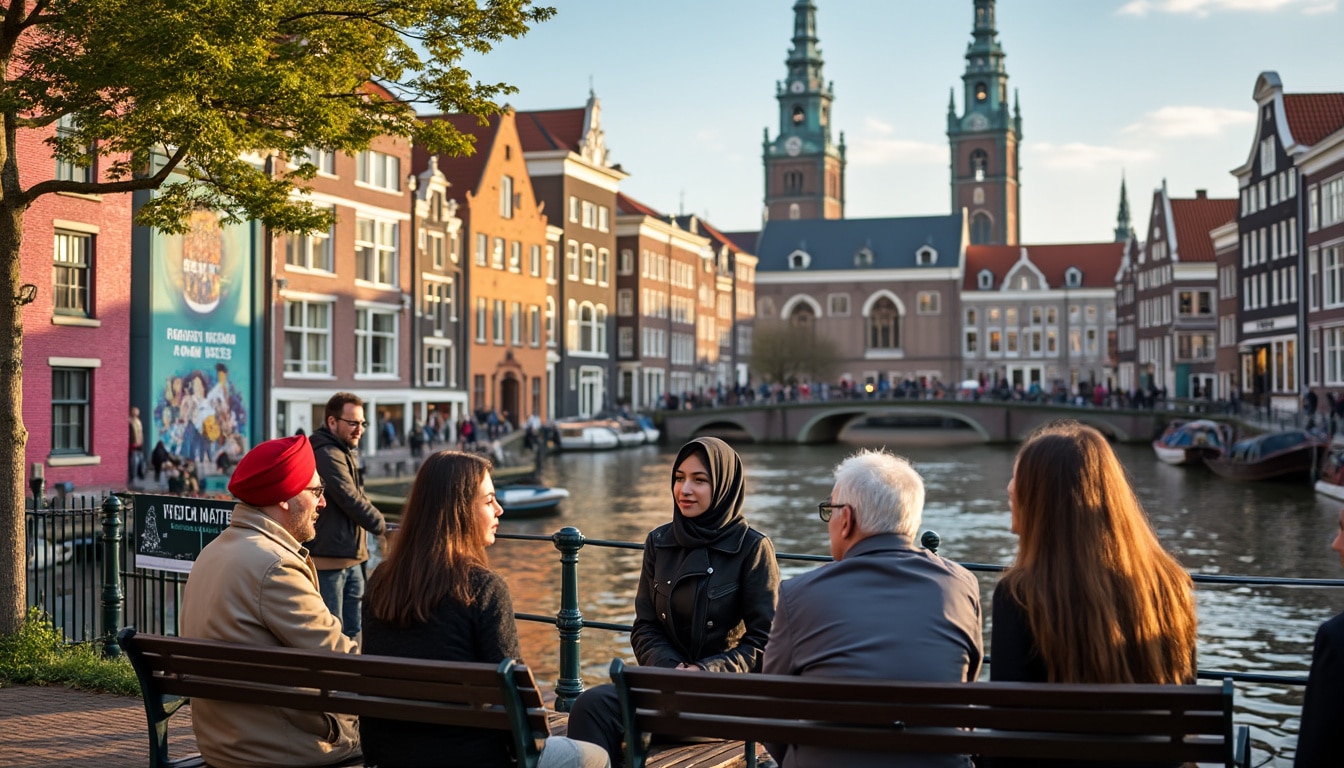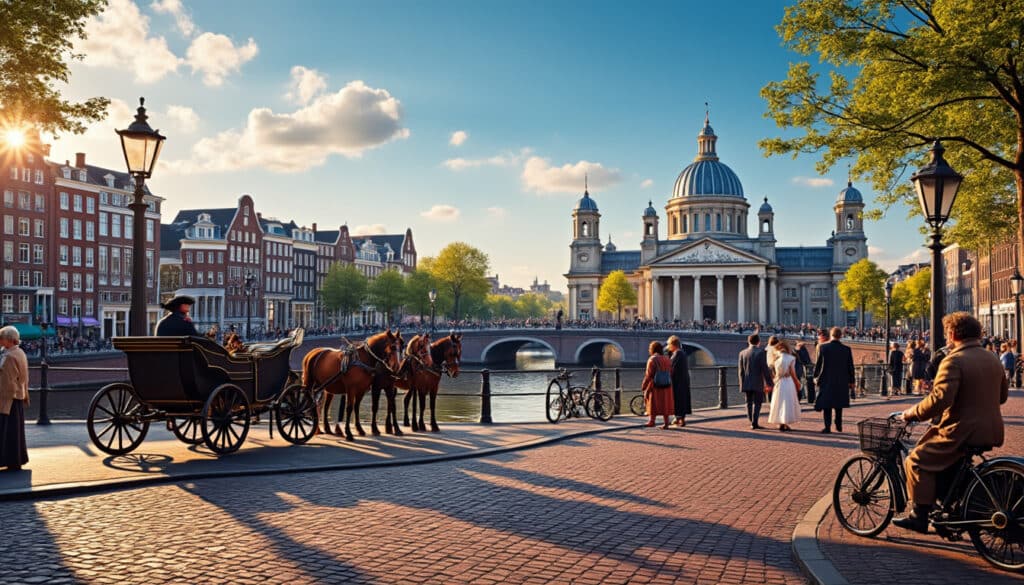Amsterdam, often celebrated for its charming canals and vibrant culture, offers a blend of historical depth and modern vibrancy. Yet, beneath its picturesque exterior lies a tapestry of unusual facts and pressing social issues that often go unnoticed. From its unique infrastructural characteristics to its social consciousness in addressing modern challenges, Amsterdam continually surprises and engages. For those curious about what makes this city truly unique, here we delve into fascinating aspects of Amsterdam that go beyond the typical tourist facade.
Structural Quirks: Amsterdam’s Unique Foundation
Amsterdam is essentially a city built on water, and this has created a unique and sometimes quirky architectural landscape. The entire city rests on an intricate network of poles driven deep into the wet ground to provide stability. While this structural necessity grapples with the risk of sinking, it also shapes the distinctive skyline of the city. Amsterdam’s buildings, ancient and modern alike, are often supported by these poles, leading to the famous leaning houses known affectionately as the “Dancing Houses.” These residences have become an iconic and endearing part of the architecture of Amsterdam.
While many believe that such a foundation would render the city unstable, Amsterdam’s engineering marvels ensure its resilience. For instance, the Royal Palace in Dam Square, one of the most significant buildings in Amsterdam, is supported by over 13,569 wooden poles—a testament to Dutch ingenuity and engineering prowess.
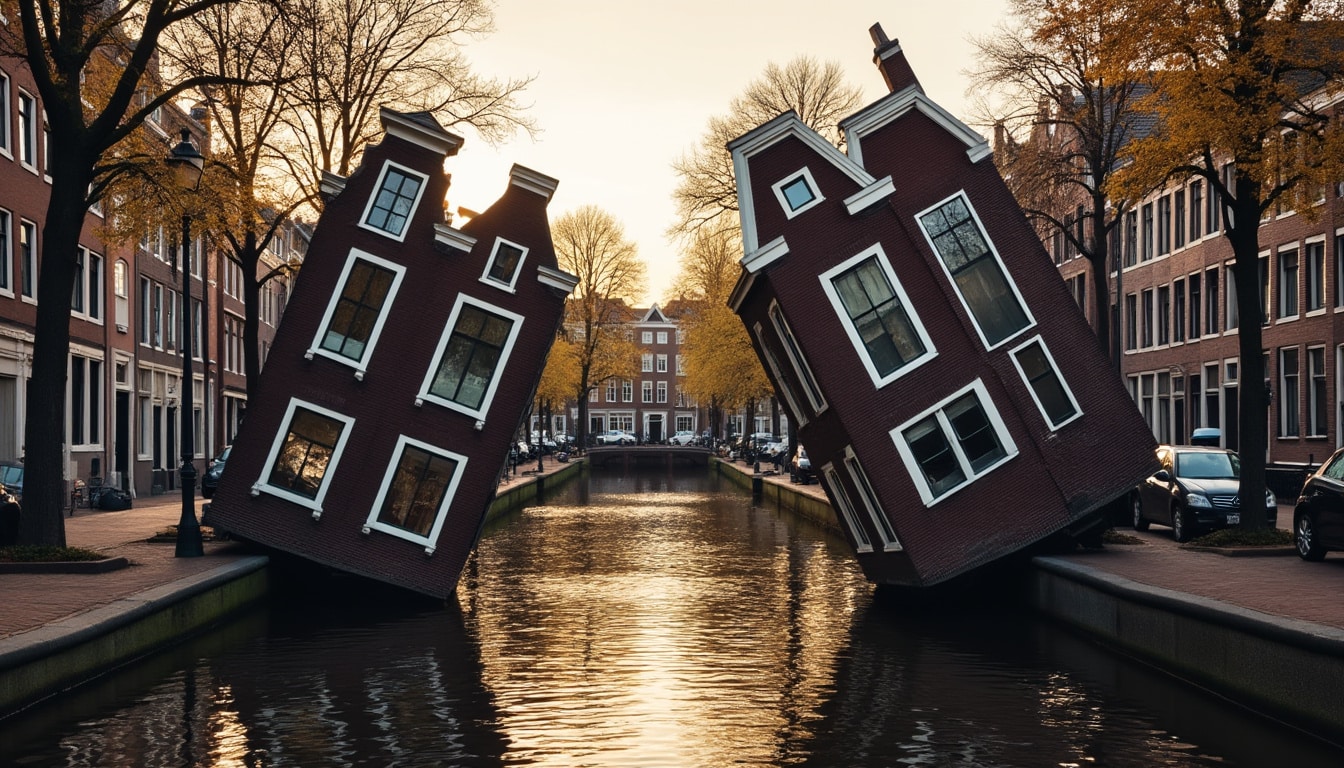
The city’s water management extends even further with over 1,500 bridges connecting 165 canals. This hydrologic network not only facilitates transport and trade but also contributes to Amsterdam’s unique charm as the “Venice of the North.” The strategic integration of nature into urban design is evident throughout the city, from the lush greenery lining canal banks to the “Eco Amsterdam” initiatives promoting sustainable architecture.
- 🚲 Amsterdam has more bicycles than residents, highlighting its eco-friendly approach to urban transport.
- 🏡 The average house in Amsterdam is supported by 5 to 10 poles.
- 🌿 The “Cycle for Change” initiative encourages sustainable practices through cycling.
- 🛳️ There’s an unusual attraction known as Poezenboot, or the Cat Boat, which shelters stray cats.
These fascinating facts not only reflect Amsterdam’s historical challenges with water but also showcase its adaptation into a thriving, modern metropolis committed to environmental sustainability. For those intrigued by urban planning or architectural excellence, Amsterdam presents countless opportunities to explore these intricacies.
Diverting Trash and Treasures: The Canals of Amsterdam
The canals of Amsterdam are not merely scenic or historic features of the city; they also play an essential role in daily life and the economy. However, these beautiful waterways also serve as unexpected depositories for thousands of bicycles each year. It’s estimated that 10,000 bikes are dredged from the canals annually, indicative of the chaotic yet charming lifestyle of Amsterdam’s cyclists.
These bicycles, along with other forms of debris, often find their way into the canals under various circumstances—frequent storms, forgetful owners or thefts gone awry. While this may seem like an amusing anecdote, it highlights a significant environmental concern. The city has responded with rigorous cleaning schedules and innovative solutions to reduce this kind of pollution. The “Green Amsterdam” movement has championed initiatives that focus on clearing the canals, ensuring they remain not just picturesque but also ecologically viable.
However, not everything that rests beneath the waters of Amsterdam’s canals is unwanted refuse; stories abound of treasure fleets and hidden gems waiting to be discovered. The municipalities sometimes engage in canal dredging as part of archaeological explorations, bringing history to the surface from these watery depths.
Apart from bicycles, here are some unusual items found in Amsterdam’s canals:
- ⚓ Ancient coins and small artisan crafts that tell stories of trade and commerce.
- 📜 Historic artifacts potentially dating back to Amsterdam’s Golden Age.
- 🎸 Musical instruments, possibly remnants of the city’s vibrant artistic past.
This dual reality of the canals—as both trash bins and treasure troves—offers visitors a unique glimpse into Amsterdam’s historical narrative and its environmental challenges. Tourists often participate in Amsterdam Tours geared towards educating them about both the city’s grandeur and its more peculiar aspects.
Social Issues in Amsterdam: Navigating Modern Challenges
Despite its picturesque appeal, Amsterdam, like any major city, grapples with its share of social issues. The blend of history and modern culture often brings unique challenges that require innovative solutions. One such issue is housing. The demand for affordable housing in Amsterdam frequently exceeds supply, leading to a contentious real estate market. To tackle this, the city has embraced progressive housing policies, including the conversion of old ships into houseboats to accommodate more residents.
Moreover, Amsterdam is renowned for its commitment to social equity and has positioned itself as a leader in LGBTQ+ rights. As the first city to legalize same-sex marriage, Amsterdam celebrates diversity with events like the Amsterdam Diversity Festival. This commitment is seen as a beacon of progressiveness amid ongoing global debates over equality and rights.
The city also continues to address substance use with a pragmatic approach. Although the use of cannabis is often associated with crime and vice, Amsterdam’s regulated market aims to mitigate these negative impacts. “Social Impact Amsterdam” initiatives focus on utilizing a controlled environment to educate and promote responsible use.
Issues related to immigration and integration also take center stage in Amsterdam. As home to over 180 different nationalities, the city prides itself on its multiculturalism. The “Amsterdam Refugee Collective” works towards integrating refugees and promoting cross-cultural understanding, breaking down stereotypes, and fostering community ties.
- 🏠 Housing Challenges: Converting old ships to houseboats helps relieve housing shortages.
- 🌈 LGBTQ+ Leadership: First city to legalize same-sex marriage, hosting vibrant pride events.
- 🛑 Substance Regulation: Controlled environments for substance use reduce associated crime.
- 🌍 Diverse Demographics: Hosting 180 nationalities underscores a successful multicultural integration.
Amsterdam remains a microcosm of contemporary urban challenges and triumphs. Its policies and initiatives offer valuable lessons in innovation and inclusivity, charting a path that other cities watching the “Amsterdam Project” could follow.
The Cultural Tapestry: Art, Museums, and Multilingualism
Culture is an intrinsic part of Amsterdam’s identity. Boasting more museums per square kilometer than any other city in the world, Amsterdam is a haven for art enthusiasts and historians alike. The city’s rich cultural scene is reflective of both its illustrious past and dynamic present. Key sites include the Rijksmuseum, showcasing Dutch masterworks, and the Anne Frank House, a poignant reminder of Amsterdam’s historical narrative during World War II.
The city’s landscape is dotted with vibrant street art that captures its contemporary ethos. The “Amsterdam Street Art” movement has transformed neighborhoods into open-air galleries, presenting art that is accessible and thought-provoking. These artworks often reflect societal themes, adding layers to the city’s cultural discussions.
Multilingualism further characterizes Amsterdam as nearly 90% of its residents speak two or more languages, often English, and sometimes German or French. This polyglot populace is a testament to Amsterdam’s international appeal and openness. Such linguistic adaptability is a significant advantage for non-Dutch-speaking visitors, making Amsterdam not only a desirable tourist destination but also a welcoming home for expatriates.
| 🎨 Museums | 🎭 Street Art | 🔤 Languages Spoken |
|---|---|---|
| Rijksmuseum | Famous neighborhoods like Jordaan | Dutch, English, German |
| Van Gogh Museum | Public spaces and galleries | French, Spanish, more |
This cultural fabric, woven from history, art, language, and openness, makes Amsterdam’s cultural scene both rich and accessible. As a hub of creativity and intellectual exchange, Amsterdam’s institutions welcome millions of visitors annually. This diversity is further enriched by forums like the “Amsterdam Diversity Festival” which celebrates cultural plurality as a way of life.
Tourism, Festivals, and Modern Life
Amsterdam is famous for its lively social calendar, which includes numerous festivals, arts events, and cultural celebrations. The city offers much more than its iconic tulip displays and bustling canals. Annual events such as King’s Day, Amsterdam Light Festival, and the Grachtenfestival draw both locals and tourists, shining a spotlight on the city’s vibrant traditions and modern innovations. These festivals not only celebrate Amsterdam’s rich cultural heritage but also its progressive strides in arts and technology, supporting ambitions towards presenting Amsterdam as a city where history meets innovation.
The “Eco Amsterdam” initiatives are also apparent in the tourism industry, where eco-friendly travel options and sustainability-centric festivals are becoming standard. Tourists are encouraged to participate in activities like bike tours, helping maintain Amsterdam’s carbon-neutral goal.
The city’s time-honored tradition of free trade manifests in its internationally recognized stock exchange, the oldest in the world. While contemporary stakeholders engage in this global marketplace, there continues to be an emphasis on ethical practices and corporate responsibility.
For those planning to visit, it’s imperative to appreciate the city’s blend of heritage and synopsis. Here are a few tips for a sustainable and enriching Amsterdam experience:
- 🚴 Rent a bike to explore the city’s nooks and avoid contributing to traffic congestion.
- 🌿 Participate in eco-friendly tours that highlight Amsterdam’s green initiatives.
- 🎊 Experience local festivals that mix tradition with modern celebrations.
Whether through understanding its socio-historical backdrop or partaking in its modern festivities, Amsterdam invites all to become part of its living, breathing narrative. Exploration opportunities like Amsterdam Tours cater directly to those wanting a deeper understanding of the city beyond its surface stereotypes.
FAQ: Your Amsterdam Questions Answered
- Is it safe to cycle everywhere in Amsterdam?
Yes, Amsterdam is one of the most bike-friendly cities globally, with dedicated bike lanes ensuring safety. - Can tourists visit the poezenboot?
Absolutely, Poezenboot is open to visitors and offers a unique experience with Amsterdam’s feline residents. - Does Amsterdam have English-speaking tours?
Yes, most tours are available in multiple languages, including English, ensuring accessibility for international visitors. - What are the best times to visit Amsterdam?
Spring and early fall offer mild weather and host several key festivals, providing ideal conditions for explorers. - How does Amsterdam support multilingualism?
The diverse populace and education encourage speaking multiple languages, supporting a welcoming environment for expats and tourists.
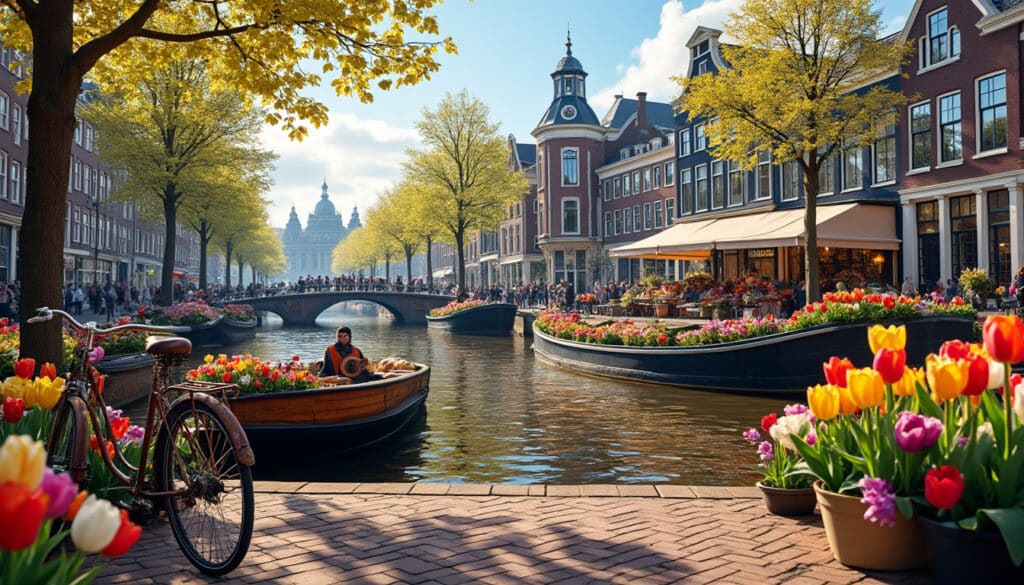
Fun Facts & Curiosities About Amsterdam
Amsterdam, the vibrant capital of the Netherlands, is a city that never ceases to amaze. Known for its serene canals, world-renowned art museums, and rich history, it’s no wonder that this ‘Venice of the North’ attracts over 20 million visitors…
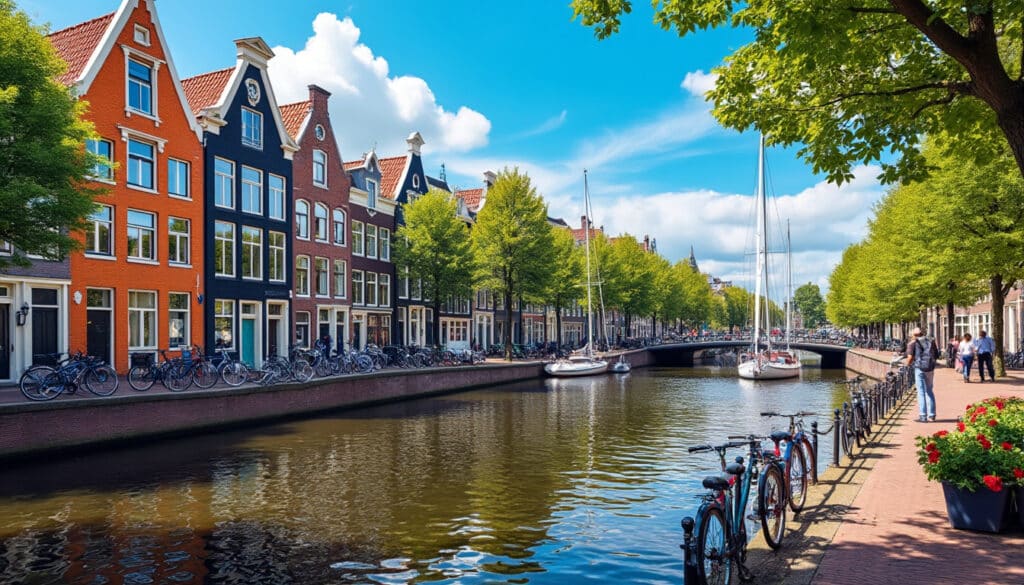
Architecture and urban features of Amsterdam
Amsterdam, a city renowned for its intricate network of canals and historical charm, is also a hub of architectural brilliance. From its iconic canal houses to modern marvels, the city’s architectural landscape offers a delightful exploration for design enthusiasts. As…
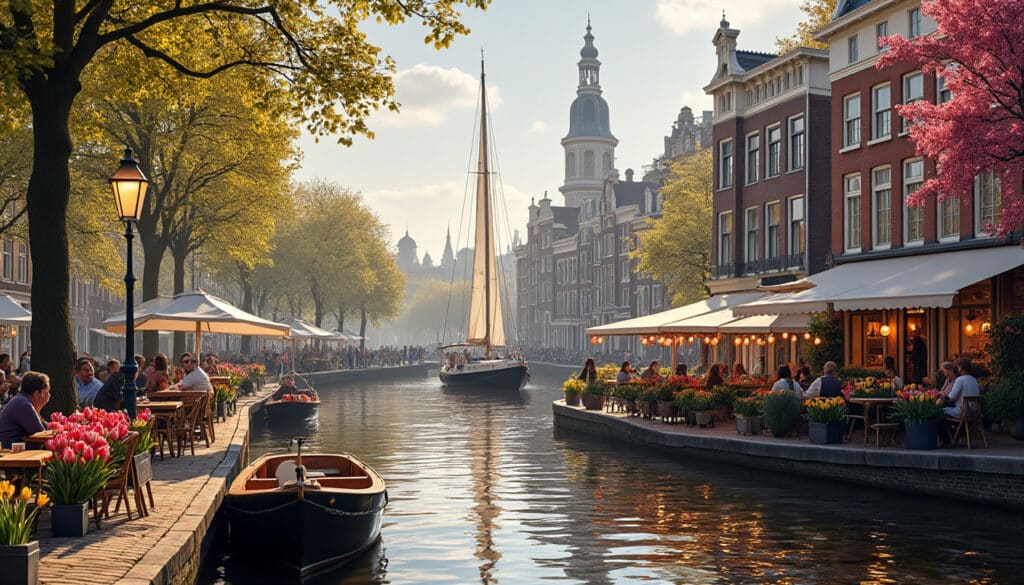
Amsterdam, the capital city of the Netherlands, offers an intriguing blend of historical charm and modern-day convenience. Known for its stunning architecture, cultural diversity, and vibrant neighborhoods, this city provides a unique experience for both residents and tourists. From biking…
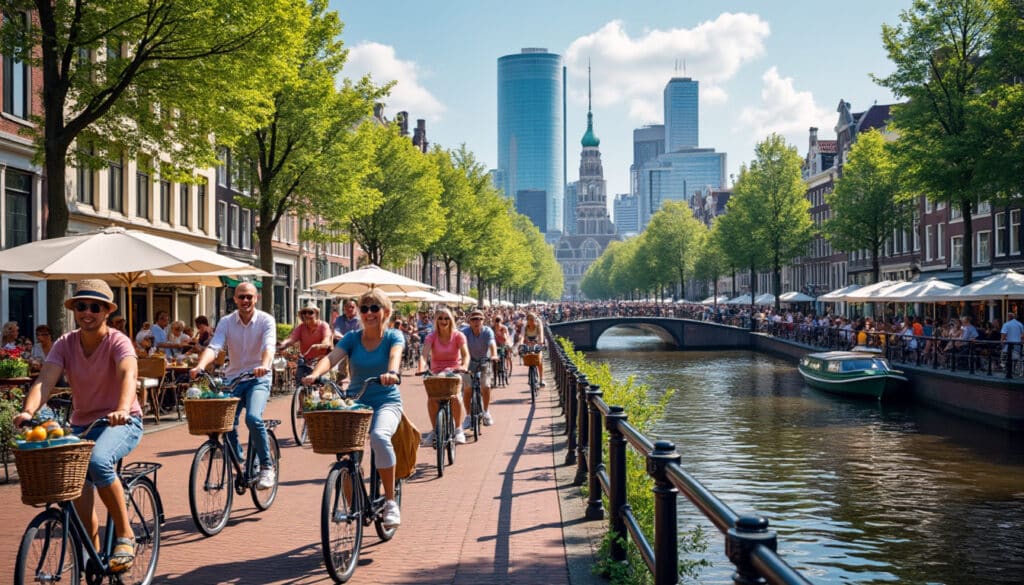
Demographics and geography of Amsterdam
Amsterdam, a city renowned for its intricate canal systems, historic landmarks, and vibrant culture, is a place that offers a captivating blend of the old and the new. Known formally as the capital of the Netherlands, it stands as a…
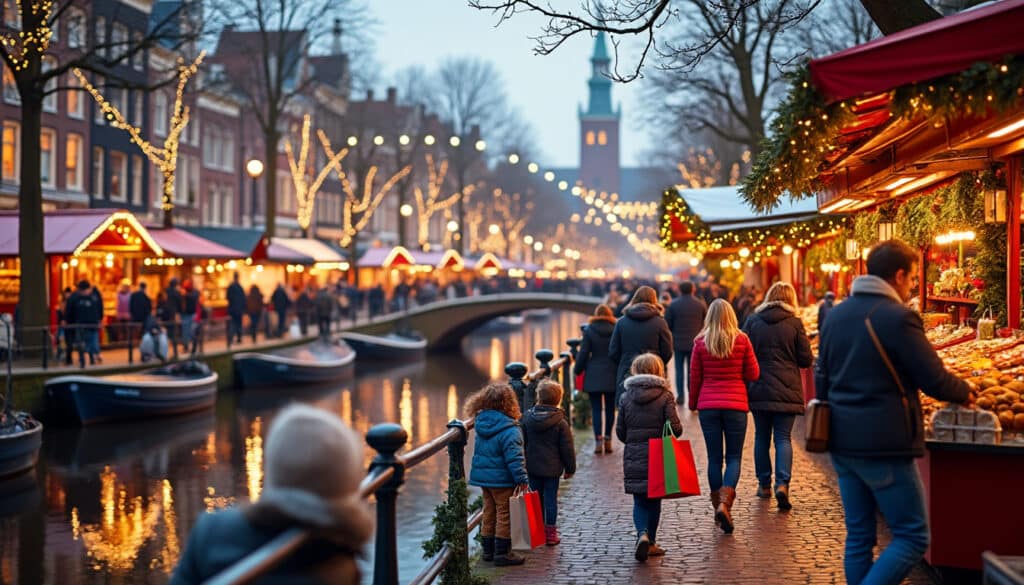
Holidays and celebrations in Amsterdam
Amsterdam, a city with a rich tapestry of history and modern culture, transforms itself through its myriad of festivals and celebrations throughout the year. As each season unfolds, the city reveals a unique character, inviting locals and visitors alike to…
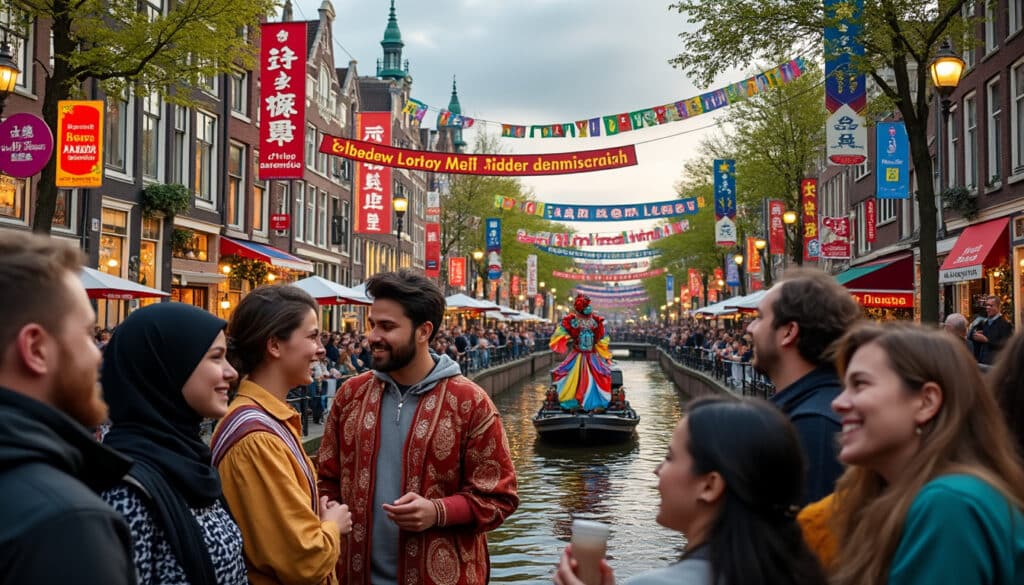
Language and spelling of Amsterdam
Amsterdam, with its historic canals, vibrant culture, and diverse demographics, thrives in its unique linguistic landscape. 🇳🇱 The official language is Dutch, a symbol of the city’s deep roots and rich heritage. Yet, this dynamic metropolis stands out for its…
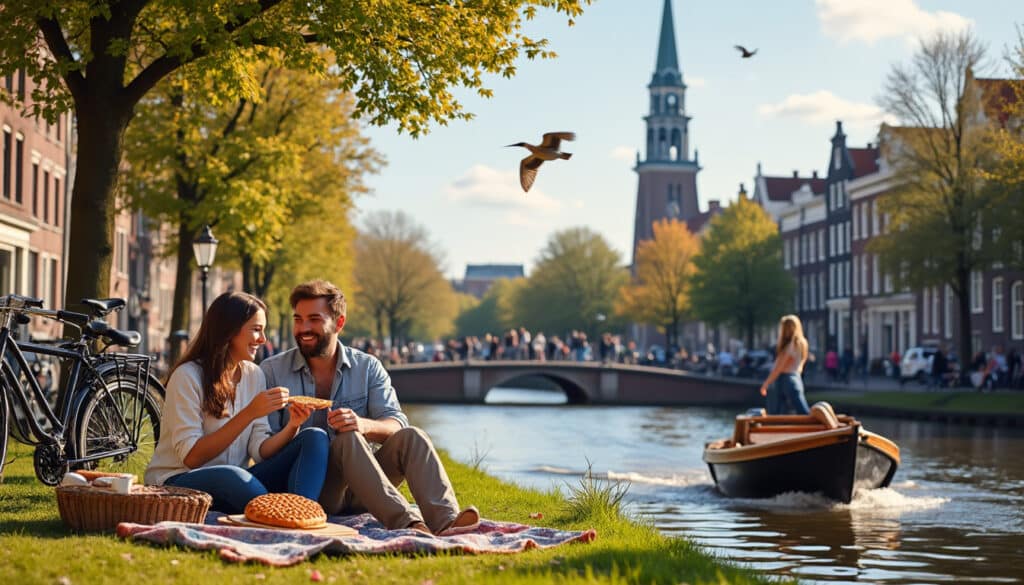
Local tips for tourists in Amsterdam
Amsterdam is a city brimming with historical charm, vibrant culture, and unique experiences that attract millions of visitors each year. While many tourists flock to the typical hotspots, there’s a wealth of hidden gems and local secrets waiting to be…
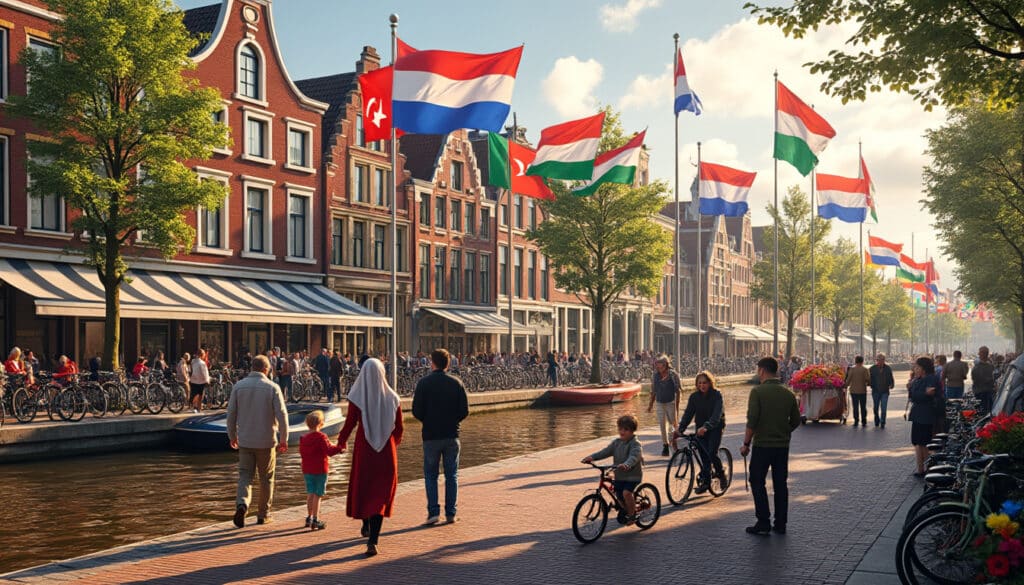
Names, flags, and identity of Amsterdam
The vibrant city of Amsterdam, with its rich tapestry of history and culture, showcases its identity in manifold ways. Beyond its iconic canals and architecture, the names and symbols, such as flags and coats of arms, deeply root its unique…
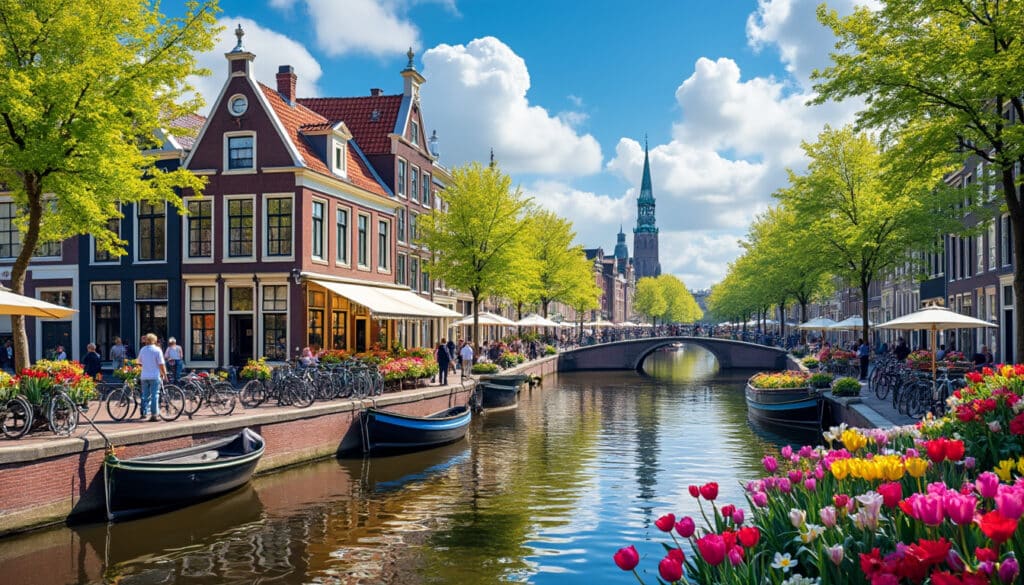
Reputation and identity of Amsterdam
A city of canals, history, culture, and innovation, Amsterdam has always been a significant player on the global stage. Known for its liberal ethos and iconic landmarks like the Van Gogh Museum and the Rijksmuseum, this Dutch capital has cultivated…
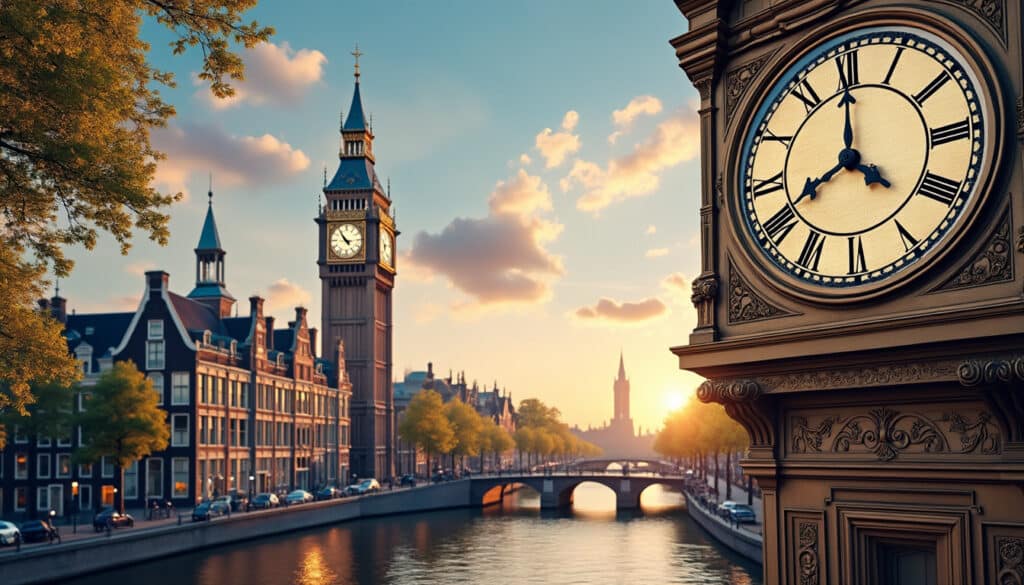
Time and time zone in Amsterdam
In a city as vibrant and multifaceted as Amsterdam, understanding the intricacies of time and time zone is crucial for both residents and visitors alike. From the precision of Amsterdam Clocks to the seasonal shifts in Daylight Saving Time, every…
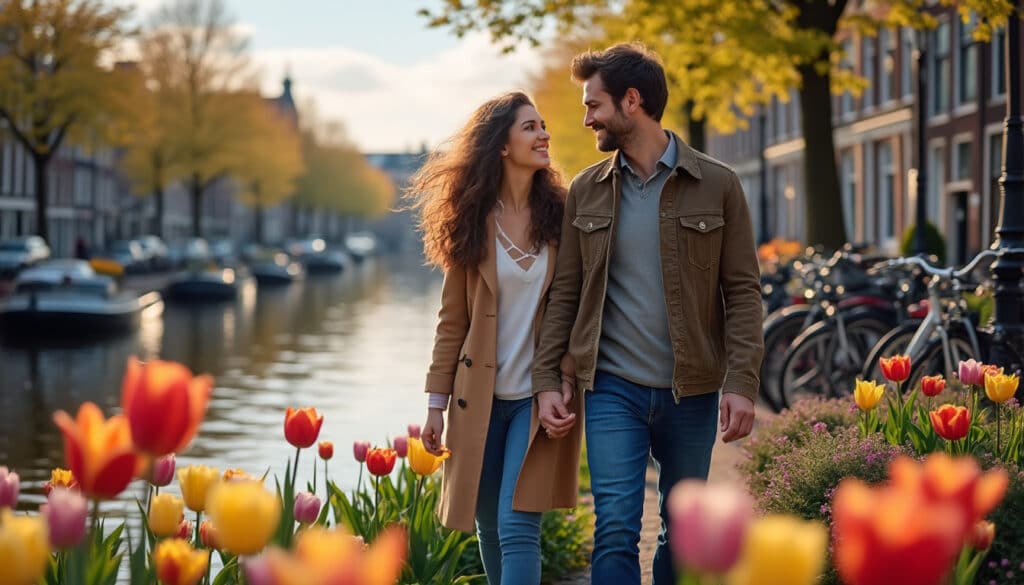
What does Amsterdam look, smell, feel like?
Embark on an immersive journey through the sensory tapestry that is Amsterdam, a city where sight, smell, and touch blend to create an experience both unique and familiar. As bicycles gracefully weave through the cobblestone streets, the unforgiving wind dances…

